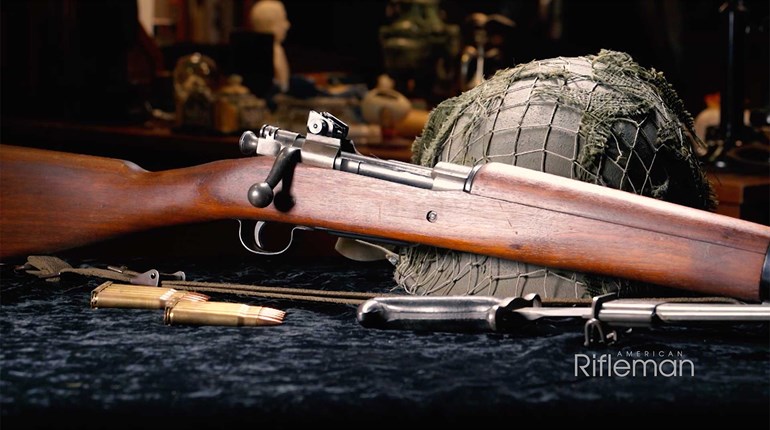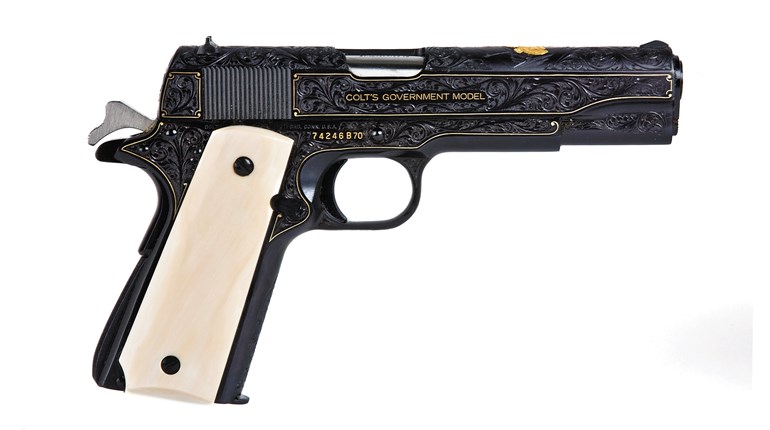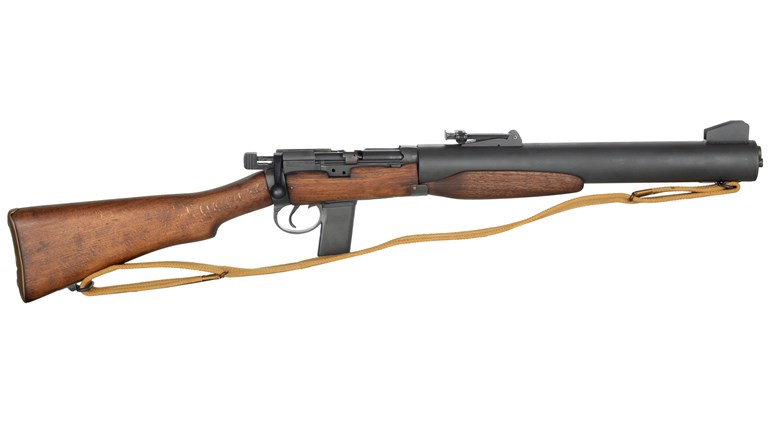
There’s an oft-repeated proverb which solemnly advises us “necessity is the mother of invention.” We cannot be certain this is invariably true, but there are plenty of examples that suggest a great deal of credibility in the saying. Where weapons are concerned, more than a few warriors have come up with some innovative weapon or technique in order to go about their deadly work more efficiently. From the Molotov cocktail to COL Bob Howard’s det cord and steel washers ambush-breaker, clever soldiers have found innovative ways to get it done. Rule books tend to be discarded when they start issuing ball ammo and live hand grenades. Let’s take a look at some really effective improvised weapons or improvised means of deploying existing weapons.
In the 1930s, America ramped up for the possibility of another war. World War I saw the widespread use of armored vehicles, some of them tracked. Such vehicles could raise havoc in a formation of infantry, so we developed an anti-tank gun for the foot soldiers. In 1940, American infantry units—both Army and Marines—got the first 37 mm anti-tank guns. They looked similar to existing artillery howitzers, with split trails, recoil mechanism, rubber tires and a manually operated, breech-loading mechanism. Intended to be used for direct fire, the gun was a size and weight that allowed the crew to move it by hand and it could be towed by a jeep.
The 37 mm bore was just under an inch and a half and there were several kinds of shells made for it. As soon as World War II got going, it became obvious that the 37 mm wasn’t enough gun for its assigned role, at least in the European Theater of operations. The 37 mm shells just sort of bounced off the monster German tanks. Out in the Pacific, the Japanese seldom deployed their light tanks, so the Marines used their 37s against various kinds of fortifications. The canister round, literally a giant buckshot load, was quite effective when a proper target came along.
In the early years of World War II, the Solomon Islands archipelago saw a hard-fought campaign that is best known for the battle on and around Guadalcanal. There were many islands in the chain and many had Japanese Army and Navy bases. It became as much a naval campaign as an amphibious one. Light fighting vessels were used and the PT boats were absolutely perfect for the fighting. Made of wood and equipped with powerful engines, the boats were capable of 40-knot speed. Indeed, speed and maneuverability were their defenses, while torpedoes were their main armament. The PT boats came with turret-mounted .50-caliber machine guns.
Some of the young and aggressive PT boat skippers wanted something to work over the lightly armored barges the Japanese used for supply. The 37 mm anti-tank gun was tried and seemed to be a good idea. On the day before his last mission, the skipper of PT 109 ordered a 37 mm gun mounted on the deck of the boat. The wheels had to come off and a mounting system jury-rigged to hold the gun firmly in place. We never found out how well it would work, because a Japanese destroyer rammed 109 and sliced it in half. The skipper was a naval officer named John F. Kennedy, and we all know his story.
Clear around the world in France, another anti-tank weapon was used by our infantry soldiers with mixed success. The 2.36-inch rocket launcher (nicknamed the “bazooka”) was a relatively light 15-pound metal tube that was fixtured to ignite and stabilize a rocket for the first few feet of travel. As a rocket, the driving motor was inside and traveled with that device until it burned out. A warhead at the front end carried an explosive shaped charge that could literally burn a hole through several inches of armor.
Fired from a soldier’s shoulder, the bazooka was effective only when the soldier could maneuver to get a flanking or rear-end shot at a German tank. Technical difficulties cropped up in the course of developing the system, but it came to work fairly well. It took on a completely new light when it came to the innovative guys in the Army Air Corps.
The Air Corps used large numbers of Piper Cub airplanes to fly over the battlefield and observe what the enemy was doing. The unarmed planes were extremely maneuverable and elusive, and thus effective in getting a pair of eyes on the enemy. Some of the pilots grew tired of just spotting targets and reporting—they wanted to shoot. One of their number, Charles Carpenter, became known as “Bazooka Charlie” after figuring out how to mount bazookas on the wing struts of his little two-seater airplane.
First it was three on the left wing, but then he added three more on the right side. Fired electrically from the cockpit, the rockets were pre-loaded and wired up before takeoff. Since the rockets in their tubes were essentially recoilless, as well as outside the propeller arc, it had no adverse impact on the little plane’s flight. Before it was over, Bazooka Charlie killed 14 German armored vehicles by getting them from above and behind.
Then there was the Stinger. The 5th Marine Division was tasked with the assault on the critical island fortress of Iwo Jima. They wanted a machine gun that was lighter than the Browning M1919A4 and fired at a faster rate. The answer was a gun that came to be called the Stinger, an aircraft version of the .30-caliber Browning made for use in the wing mounts of early fighters, as well as in the flexible mounts of rear-facing torpedo and dive bombers.
Marine ordnancemen took six of the aircraft guns, which were smaller and lighter versions of the classic Browning and added a buttstock and a bipod. The Stingers worked well and are part of World War II gun lore. Cpl Tony Stein was using a Stinger when he performed the acts the nation recognized with the Medal of Honor.
Necessity is the mother of invention with fightin’ iron.




































